 |
| Environmental
Stewardship |
|
| With
more and more people visiting the backcountry
and natural areas, it is more important than
ever for all users to practice responsible
environmental stewardship. This means using
travel strategies that minimize impact and
working educate yourself and others on the best
way to protect the natural resource.
Jeannie
and Chris are both Leave No Trace Master
Educators. They both practice and teach environmental
stewardship and the seven leave no trace principles
to individuals, leaders and organizations.
Contact them for more information on how they
can organize some training for you, or your organization.
|
|
|
|
|
|
|
The
Seven Leave No Trace Principles:
|
|
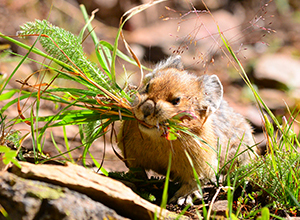 |
|
|
|
Before you start your trip, take some time to
research the conditions, the area that you are
going to visit and the regulations so that there
aren't any surprises. It
can also be beneficial to take some time to
consider how you can minimize your impact on
your trip. Discussing these strategies beforehand
with the rest your party can ensure that everyone
is on the same page.
Also, it is important to make an emergency plan
in case something goes wrong. This also includes
leaving an itinerary with someone that you
trust.
|
|
|
|
|
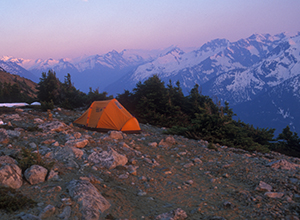 |
|
Travel
on Durable Surfaces |
|
|
Each
step that we take can have a long lasting impact
on the environment. To minimize your impact,
choose durable and resilient surfaces as much as
possible. Durable surfaces include trails,
rocks, sand, dirt and gravel. Resilient surfaces
include hardy grasses, dry meadows and areas
where the vegetation will recover quickly if
damaged. Areas
to avoid include wet meadows, fragile alpine
plants. Also, if there is an area of vegetation
that is receiving a lot of traffic, consider avoiding
that area and work to encourage others to spread
out their impact. This also applies to hiking
through fragile areas. When
setting up tents in pristine areas, select the
most durable surface possible. When camping on
vegetation, move camp each day to limit damage. |
|
 Learn
More Learn
More
|
|
|
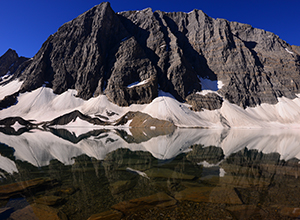 |
|
Dispose
of Waste Properly |
|
|
Releasing
chemicals, food scraps and human waste into
natural water ways can have a huge environmental
and social impact on the backcountry. To reduce
the chances of releasing harmful wastes and
chemicals into the environment consider: burying
human waste and dumping gray water sixty meters
away from water sources. To
reduce the chance of contamination, human waste
should be buried in a 'cat hole.' This hole
should be dug away from travel areas or areas
where people might set up camp or rest. The hole
should be at least fifteen centimeters deep and
covered with dirt afterwards. Also,
to avoid contaminating streams and lakes, do not
dump soap or food scarps into waterways and
remove sunscreens and cosmetics before swimming
or washing. All
food waste and garbage should be packed out.
Unless there is an established toilet facility,
toilet paper should be carries out or buried at
least fifteen centimeters deep, so that animals
cannot dig it up. |
|
|
|
|
|
|
|
|
 |
|
|
|
To
safeguard the natural experience for future
users, leave the areas that you visit in as pristine
a condition as possible. action that can damage
the natural experience for others (and the environment)
include picking flowers, removing artifacts
(fossil, rocks, etc), building cairns and
furniture, leaving signage and messages
(painting, carving, drawing, etc).
|
|
|
|
|
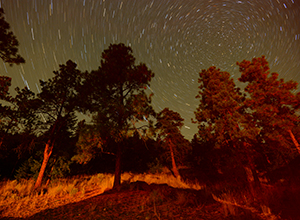 |
|
Minimize
Campfire Impacts |
|
|
Campfires
should only be built in areas where there are
designated fire rings or in areas that are safe
and will not be scarred. Scarring refers to the
black mark left behind on rocks, dirt, gravel,
etc. Another important consideration is the availability
of fuel. In certain ecosystems (desert, alpine,
tundra) the removal of fuel (wood) may outstrip
the environment's ability to replace what has
been taken. Since decaying vegetation and debris
can provide important nutrients for soil
formation, it is not suitable to build fires in
these environments. When
building a fire, have water on hand in case of emergency.
Make sure that the fire is completely out (cold)
afterwards. In pristine areas, remove any traces
of the fire to maintain the natural experience
for others. |
|
 Learn
More Learn
More
|
|
|
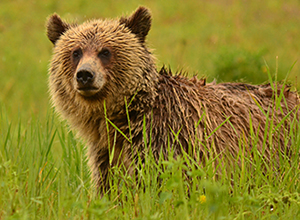 |
|
|
|
To
reduce the impacts on wildlife consider the
following strategies. Give all carnivores one hundred
meters of space and large ungulates thirty
meters. This can reduce the chances of stressing
the animals and in some cases habituating the
animals to humans (this can be dangerous). Signs
of a stressed animal can include the animal
moving away, constantly looking around and
making noises. Never
feed animals. Always store food and other
attractants in a way that keeps them safe from
animals. Also, keep dogs on a leash. When
traveling in areas where bears, cougars, wolves
and large ungulates (during mating season) may
be encountered, practice bear safe travel. This
means remaining vigilant, making noise and
walking together in a group. |
|
|
|
|
|
|
|
|
|
|
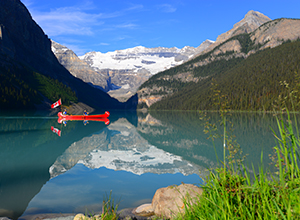 |
|
|
|
To
ensure that your presence does not impact the
experience of other visitors, consider the
following strategies. Respect the personal space
of others and try to give people some space on
trails and in campsites. Keep voices down where
possible. Do not play music in the backcountry
in a way that would affect others (they can hear
it). On
trails, horses and pack animals have the right
of way, then hikers and then bikers. Uphill travelers
have the right of way over downhill travelers. Keep
dogs on a leash and out of areas where dogs are prohibited. |
|
 Learn
More Learn
More
|
|
|
|
|
|
|
|
|
|

